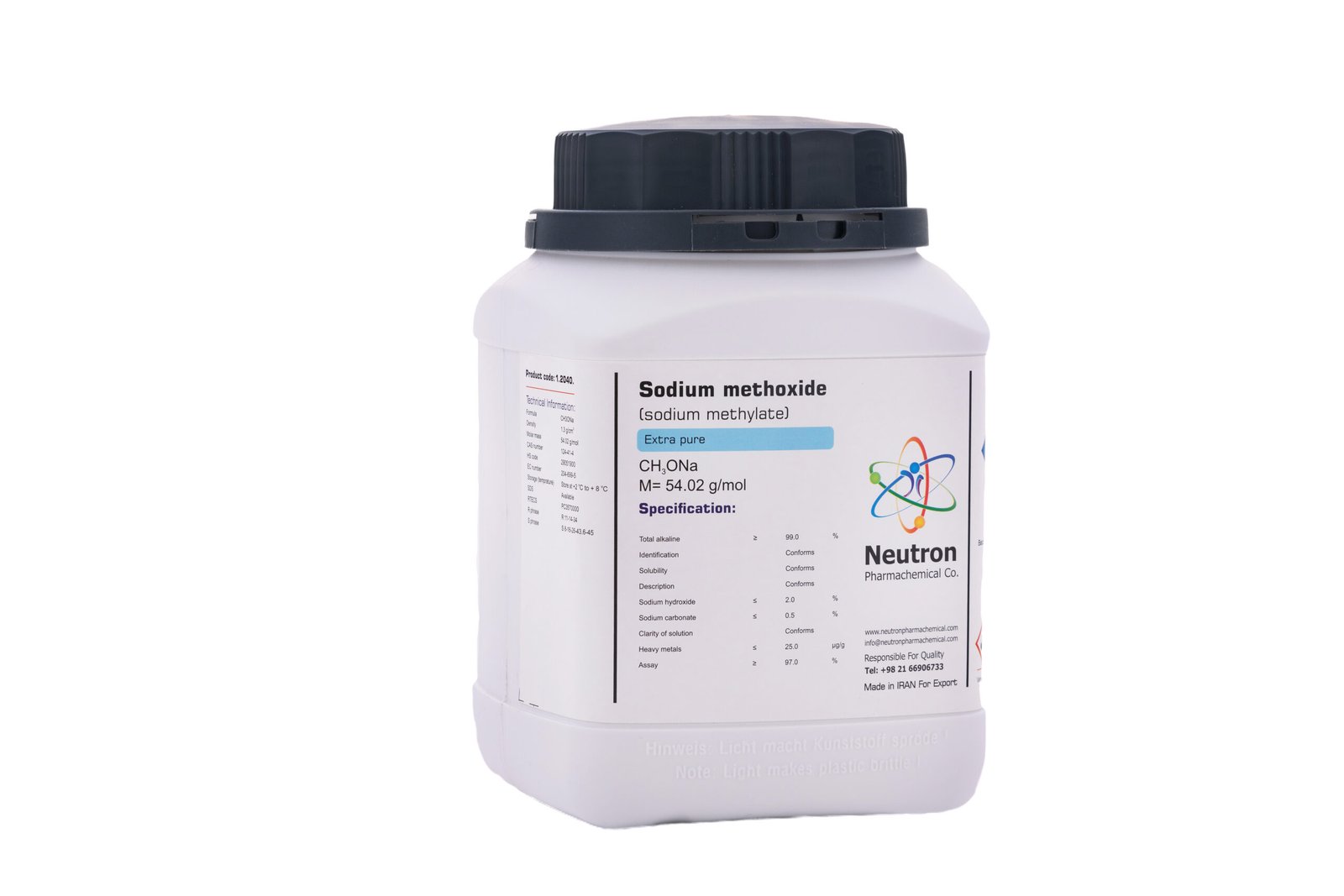Sodium metoxide
| Formula: | CH3CNa |
| Density | 1.3 g/Cm3 |
| Molar mass: | 54.02 g/mol |
| CAS number: | 124-41-4 |
| HS code: | 29051900 |
| EC number: | 204-699-5 |
| Storage: | store at +2 °C to +8 °C |
| SDS: | available |
| RTECS: | PC3570000 |
| Rphrase: | R11-14-34 |
| Sphrase: | S8-16-26-43.6-45 |
| Total alkaline: | ≥ | 99.0 | % |
| Identification: | Conforms | ||
| Solublity: | Conforms | ||
| Description: | Conforms | ||
| Sodium hydroxide: | ≤ | 20 | % |
| Sodium Carbonate: | ≤ | 0.5 | % |
| Clarity of Solvtion: | Conforms | ||
| Heavy metals: | ≤ | 25.0 | μg/g |
| Assay: | ≥ | 97.0 | % |
Sodium methoxide is a white to yellowish solid commonly used as a strong base and nucleophile in organic synthesis and industrial processes.
🏭⚗️ Production
Sodium methoxide is produced by reacting metallic sodium with methanol under controlled conditions. The reaction yields a solution or solid form depending on the amount of methanol and drying process.
🔬 Properties
Sodium methoxide appears as a white to pale yellow crystalline powder or solid. Its chemical formula is CH₃ONa with a molar mass of approximately 54.03 g/mol. It is highly soluble in methanol and reacts vigorously with water, releasing methanol and forming sodium hydroxide. It has a melting point of about 130°C (decomposes) and is highly reactive and basic.
🧪 Applications
Sodium methoxide is widely used as a catalyst in transesterification reactions for biodiesel production, in organic synthesis as a base for various reactions, and in the manufacture of pharmaceuticals and agrochemicals.
⚠️ Safety
Sodium methoxide is highly reactive and flammable. It reacts violently with water and moisture, releasing toxic and flammable methanol vapors. Contact can cause severe burns to skin and eyes. Proper protective equipment including gloves, goggles, and working under inert atmosphere or dry conditions is essential. It should be stored in airtight containers away from moisture, acids, and oxidizing agents.





